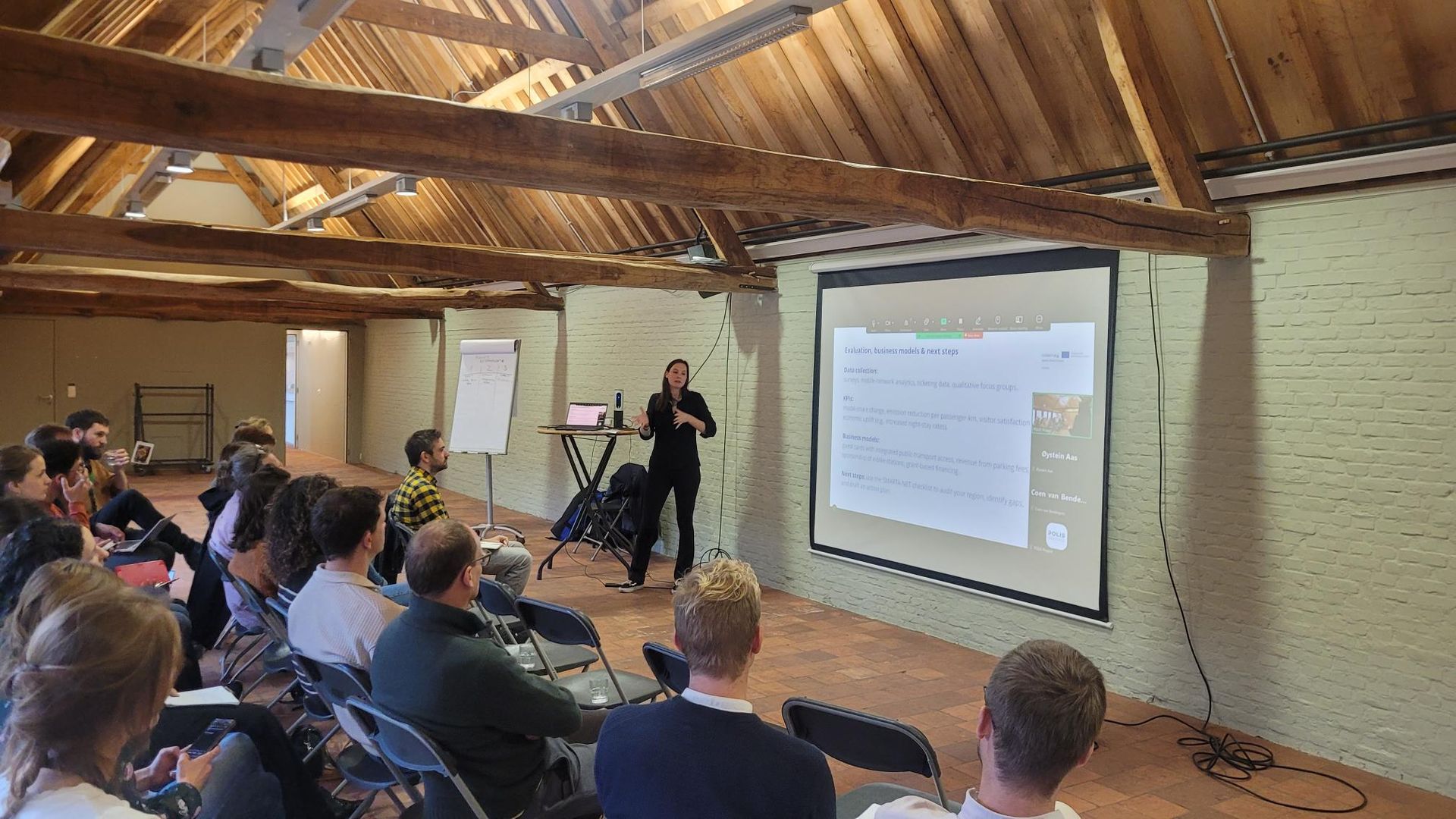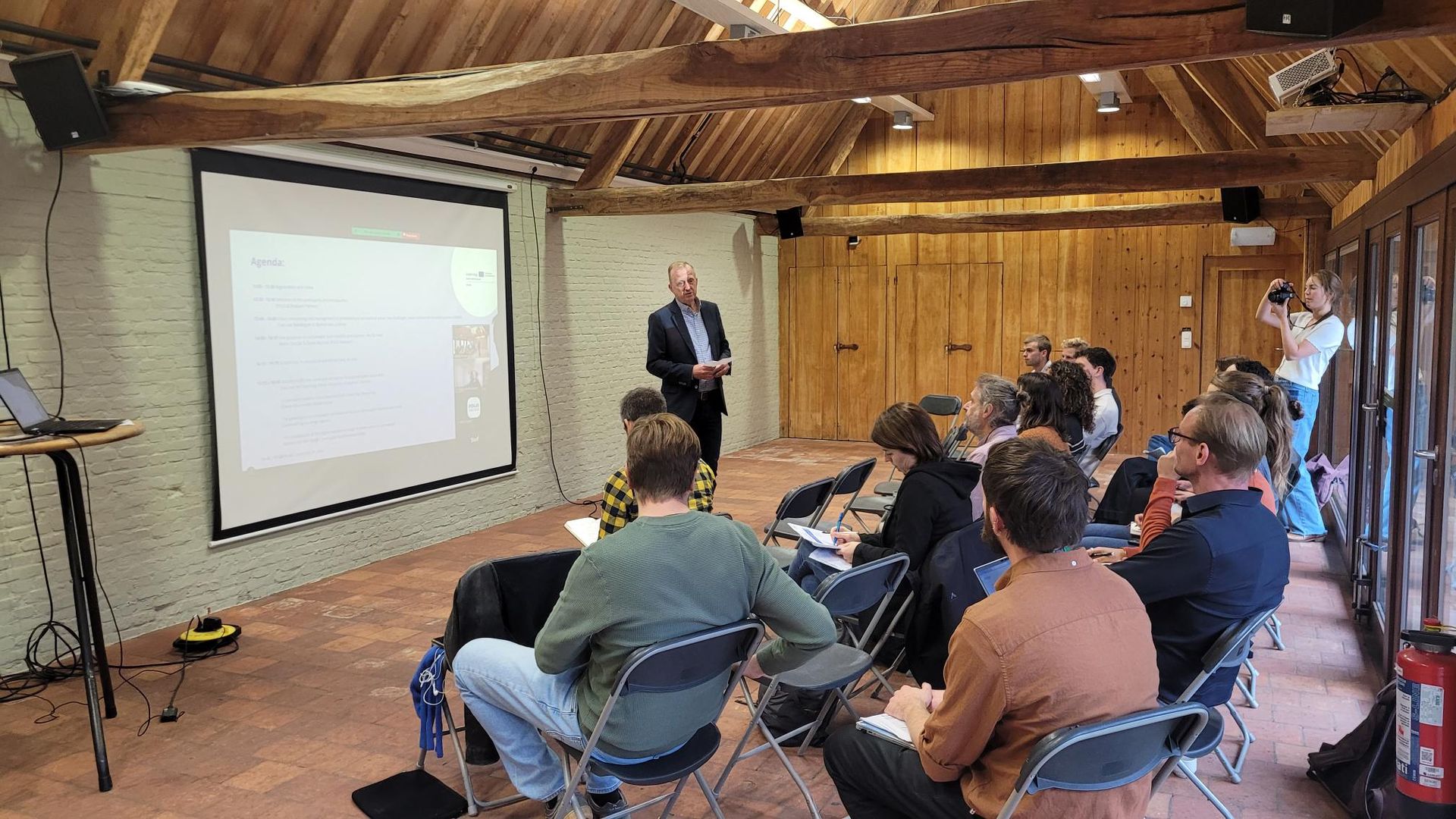On 29 October 2025, the MONA project held its second capacity-building session at Arboretum Kalmthout. This hybrid event welcomed participants from across the Interreg NWE region, both on-site and online. The half-day programme featured expert presentations, a guided field tour and a World Café, with the aim of translating insights into future policy recommendations.
In their opening remarks, POLIS reiterated MONA’s core ambition towards sustainable tourism. The agenda set out a clear structure for the afternoon, covering topics such as monitoring and governance, access management, and on-the-ground design.
Øystein Aas (NMBU) and Coen van Bendegom (Mid Sweden University) introduced the MSCA project 'Visitor monitoring and management' (VIMAS): The objective is to develop more efficient governance of nature areas for tourism and recreation, in the best way possible for biodiversity, people’s quality of life and business development. This will be achieved through research about smarter monitoring methods, improved visitor management and more inclusive governance.

Fanny Boccioli and Marko Stančec from POLIS presented the new guidance on sustainable rural mobility, spotlighting last-mile shuttles and demand-responsive transport (DRT), shared mobility suited to low-density areas, seasonal services and clear, multilingual visitor information. The session emphasised the importance of collaboration between tourism providers, transport companies, public authorities and protected area managers, and showcased a range of practical tools, from CO₂ calculators to integrated guest cards.
To make the most of the remaining daylight before evening fell, the group took a short break to enjoy a guided tour of the arboretum, before reconvening for the rest of the presentations.
After the break, Paul van de Coevering (Breda University of Applied Sciences) discussed mobility hubs at nature area gateways. These involve the co-location of public transport, shared bikes, ticketing and information points in order to capture car trips at the edge of the area. He cautioned against over-engineering in the absence of demand, arguing that hubs should be paired with parking management, inclusive access, and integrated ticketing to achieve a real modal shift.

Djavan Braumüller from Rebel Group outlined a long-term pathway for the Utrechtse Heuvelrug National Park, in which public transport would be the preferred option for longer journeys, hubs would act as smart gateways, innovation and data would guide flows, and active travel would become the natural choice for locals. This would involve moving from pilot schemes in 2026 towards a fully integrated, inclusive system by 2035–2050. We have already described the work in progress on the website. More information can be found here and here.
Kenny Vandepoel from the design studio Overlant & Fugzia presented gateway concepts for four distinct entry points for the Grenspark Kalmthoutse Heide, featuring accessible wayfinding, an integrated identity and digital tools providing real-time information on crowding and routes. The package includes a visitor distribution plan, first/last mile routes, a parking strategy and a new map to encourage visitors to make sustainable choices and visit less sensitive areas.
Mattias Van den Bergh from Grenspark Kalmthoutse Heide concluded the presentations by introducing a dynamic map that combines density heatmaps with curated itineraries. This map is designed to guide visitors to lesser-known trails, thereby supporting biodiversity and enhancing the visitor experience.
The session closed with a World Café, the results of which will inform MONA’s policy recommendations.
You can find the presentations below:
Visitor monitoring and management in protected and recreational areas: new challenges, novel solutions for the Anthropocene (VIMAS) Coen van Bendegom & Øystein Aas, Mid Sweden University
New guidance on sustainable rural mobility and tourism - the EU level Fanny Boccioli & Marko Stančec, POLIS
Mobility HUBS: the sense and nonsense for a sustainable modal shift
Paul van de Coevering, Breda University of Applied Sciences
Sustainable mobility vision National Park Utrechtse Heuvelrug
Djavan Braumuller, Rebel Group
The gateways to a sustainable recreational future in Grenspark Kalmthoutse Heide
Kenny Vandepoel, Overlant/Fugzia design agency
The introduction of ‘the digital experience map’ to steer visitors in Grenspark
Mattias Van den Bergh, Grenspark Kalmthoutse Heide